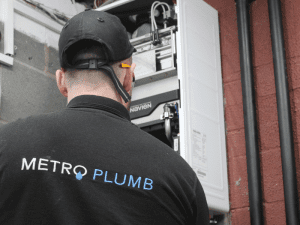What is Trace Heating?
- Home
- >
- Help & Advice Centre
- >
- What is Trace Heating?
Trace heating, or a trace heating system, is a set of electrical heating cables that are wrapped along water pipes to prevent them from freezing. They are most commonly used on central heating systems to keep the pipes above freezing and to protect the boiler, but they can be used on any pipe that is vulnerable to the colder elements, such as external pipes or pipes in basements for lofts; providing there’s an electrical source to power it.

There are many benefits to using a trace heating system, these benefits are:
Trace heating works by either wrapping or running electrical cables along your water pipes. These cables contain a heating element and, once they are connected to an electrical supply, will heat up to prevent your pipes from freezing. These cables don’t run continuously, instead, they have a built-in thermostat which will trigger them to turn on when the temperature drops below a certain level. They will continue to heat the pipes until it reaches a warmer temperature, where it will turn off again. You can determine which temperatures you want your system to turn on and off at, we would recommend setting it to turn on when it reaches below 5°C, to ensure your pipes are protected.
Trace heating is a budget-friendly method of protecting your pipes, although it is more expensive and slightly more complex to install than pipe lagging (insulation), it is a far more reliable method. The cost to install it can vary by how many pipes you want to protect, and their location within your property, as more difficult to reach pipes will take longer to install. Costs for an electric trace heating system start at around £65 to purchase the product, depending on which one you choose, plus the cost of labour. If the pipes are easy to access and the power supply is close to the pipes you want protecting, then it will be a quick and easy install and the labour costs will be minimal, however, more complex installations can take longer to install and therefore the labour costs will be higher. In general, a trace heating system can cost anywhere from a couple of hundred pounds, up to thousands of pounds, but this is if you have a larger property with a large amount of pipes to protect.
Once the trace heating system is installed, it is very cost-effective to run. On average, whilst in use, these systems use approximately 15 watts per metre, meaning if you had 10 metres of trace heating installed and it ran constantly for 24 hours, it would cost around £0.88 for the whole day (based on the UK Oct 2024 price cap). Far cheaper than running your entire central heating system for the day, even on low.
A trace heating system needs very little maintenance to keep it running, in fact, it only needs to be maintained if it’s broken. It is however recommended to check your system at least once a year, preferably before the cold season hits, to ensure that it’s in good condition to protect your pipes.
Checking your system to make sure that there is no damage to the wiring, that it still has access to the power and that the thermostat is still functional will help to ensure that it works as it should throughout any cold spells. If you suspect that any part of your system is broken or faulty, then it’s essential to get a qualified plumber to check it before use.
You can install a trace heating system on any water pipe, provided there’s an electrical source to power it. These systems are most commonly used on heating systems and boilers in the UK, particularly the condensate pipe on the boiler which is especially vulnerable to freezing. Trace heating systems come in a variety of lengths, generally ranging from a couple of meters to over a hundred meters, and you can even get commercial versions that can run for miles! Meaning that they can be installed in virtually any situation.
There are a couple of main alternatives to trace heating systems, these are either pipe insulation, also known as lagging, or leaving your heating on low. Both of these methods work to protect your pipes from the elements, however, they do have their drawbacks:
We have expert plumbers available across the country to help with any trace heating query, installation or repair you may have; giving you peace of mind that your boiler and pipes will be protected during cold spells. Our expert plumbers are highly trained, fully insured and DBS checked so you know you’re in safe hands. If you would like to find out more about how we can help you, call 0808 250 9949.